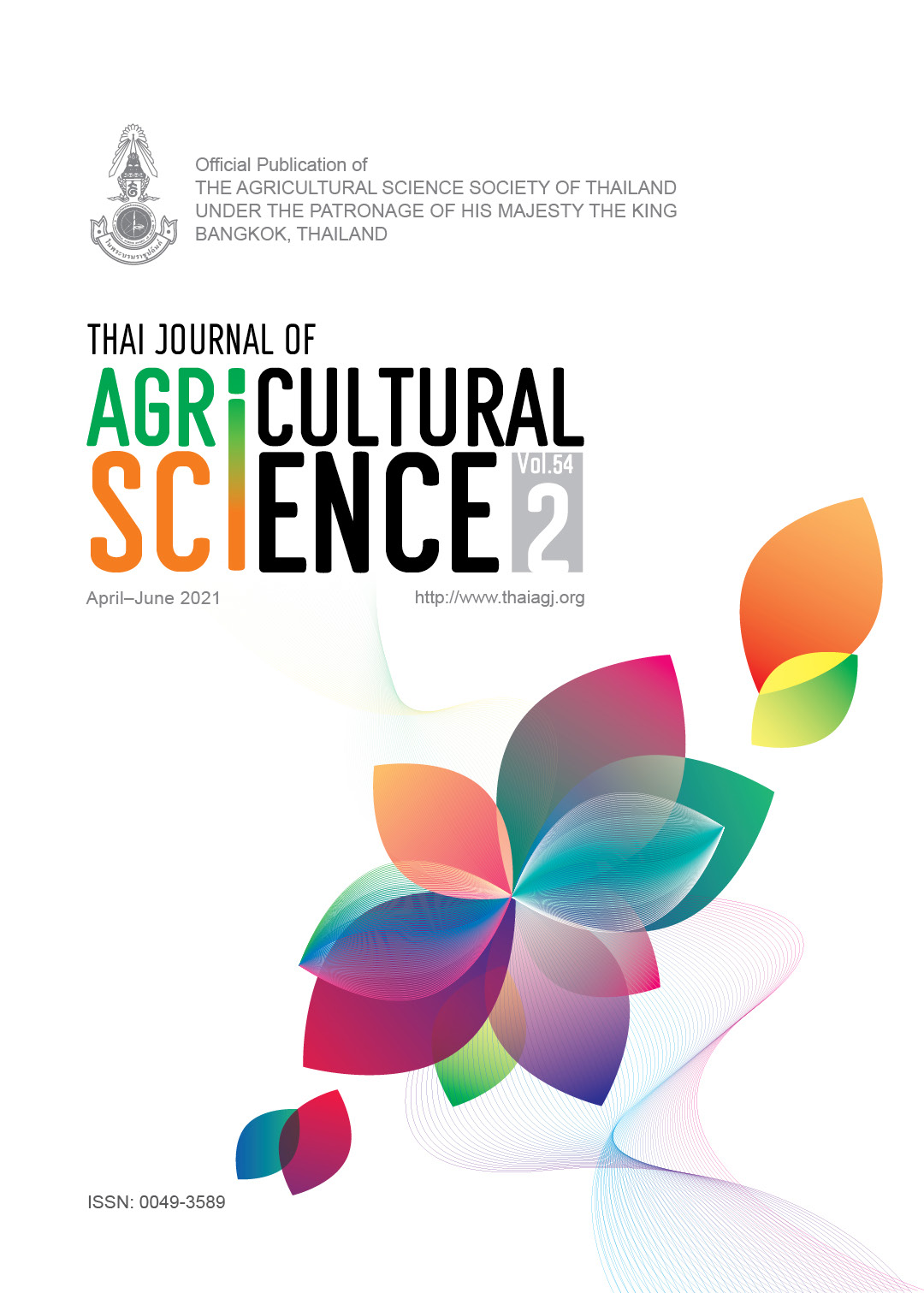Vitamin E inclusion and feed restriction during pregnancy: effect on post weaning performance of rabbit litters
Main Article Content
Abstract
Limiting the quantity of feed is advantageous because it helps to reduce the cost of feeding and excessive fatness in does and helps in preventing post weaning digestive disorders without affecting the growth performance of the animals. This study evaluated vitamin E inclusion and feed restriction during pregnancy and the subsequent effect on post weaning performance of growing rabbits. One hundred and eighty weaned rabbits were used for this experiment. Three kits whose weaning weights were close to each other were harvested from rabbit does fed with 0 and 15% feed restriction at three periods of gestation with or without vitamin E inclusion and were randomly assigned into 12 treatments of 5 replicates each. Data obtained on feed intake, weight gain and feed conversion ratio of the growing rabbits were subjected to a 2×3×2 factorial arrangement. The interactive effect shows that the 15% levels of feed restriction during pregnancy between 15–19 days of gestation with vitamin E inclusion resulted in improved body weight gain (790 ± 109 g) and best feed conversion ratio (4.14 ± 0.53) of growing rabbits (P < 0.05). This result shows that early feed restriction (15–19 days) and levels of feed restriction (15%) during pregnancy did not have any carryover effect during the post weaning periods of the growing rabbits. Late quantitative feed restriction (25–29 days) during pregnancy should be avoided as the carry over effect might show in the litters during the growing periods. Therefore, it can be concluded that quantitative feed restriction at 15% between 15–19 days of gestation with vitamin E inclusion in the diet will not have any negative carryover effect on the litters during the growing periods as the results obtained in this study did not show any negative growth pattern of the litters.
Article Details
References
Bowen, R. 2003. Vitamin E structure, absorption, transport, deficiency and toxicity in index of vitamins. VIVO pathophysiology. Available Source: http://www.vivo.colostate.edu/hbooks/pathphys/topics/vitamine.html. March 1, 2015.
Castellini, C., A. Dal Bosco, M. Bernardini and H.W. Cyril. 1998. Effect of dietary vitamin E on the oxidative stability of raw and cooked rabbit meat. Meat Sci. 50: 153–161.
Dalle Zotte, A., H. Rémignon and G.M. Chiericato. 2005. Influence of maternal feed rationing on metabolic and contractile properties of Longissimus lumborum muscle fibres in the rabbit offspring. Meat Sci. 70: 573–577.
Ebeid, T.A., H.S. Zeweil, M.M. Basyony, W.M. Dosoky and H. Badry. 2013. Fortification of rabbit diet with vitamin E or selenium affects growth performance, lipid peroxidation, oxidative status and immune response in growing rabbits. Livest. Sci. 155: 323–331.
Fortun-Lamothe, L. and F. Lebas. 1996. Effects of dietary energy level and source on foetal development and energy balance in concurrently pregnant and lactating primiparous rabbit does. J. Anim. Sci. 62(3): 615–620.
Google Map. 2015. Federal University of Agriculture. Available Source: https://earth.google.com/web/@7.22330744,3.44033719,137.84884575a,1046.69760578d,35y,100.57030218h,44.99999706t,-0r/data=Cm4abBJmCiUweDEwM. March 1, 2015.
Perrier, G. and J. Ouhayoun. 1996. Growth and carcass traits of the rabbit a comparative study of three modes in feed rationing during fattening, pp. 225–232. In: Proceedings of the 6th World Rabbit Congress. Toulouse, France.
SAS. 1999. SAS/STAT User’s Guide: Version 8. 4th Edition. SAS Institute, Cary, NC, USA.
Schlolaut, W. and K. Lange. 1990. Einfluss einer limitierten Futteraufnahme auf Wachstum und Futterverwertung beim Kaninchen. Arbeitstagung Dt. Vet. Med. Ges., Celle, Germany. 7: 118–124.
Szendro, Z., S. Szabo and I. Hullar. 1989. Effect of reduction of eating time on production of growing rabbits. J. Appl. Rabbit Res. 12: 22–26.
Tůmová, E., M. Skřivan, V. Skřivanová and L. Kacerovská. 2002. Effect of early feed restriction on growth in broiler chickens, turkeys and rabbits. Czech J. Anim. Sci. 47: 418–428.
Tůmová, E., V. Skřivanová and M. Skřivan. 2003. Effect of restricted feeding time and quantitative restriction in growing rabbits. Arch. Geflőgelkde. 67: 182–190.


